Jardín
The work of Ad Minoliti (Argentina, 1980) uses geometry and color to build non-binary speculative fictions that are later translated into different bodies of work. For Minoliti, geometry is the best tool to represent and investigate the possibility of a non-human heterotopia; an alternative universe, in which certain theories that interest them can be applied to pictorial language to help us understand and experience the visual world around us from another point of view.
Taking this as a starting point, the use of anti-adultist references, which manifest themselves as a constant in their work in recent years, are used as a device to rethink an anti-speciesist and queer geometric abstraction. Following the line of some of Minoliti’s recent research on queer ecologies, such as those articulated in their exhibition Fables of abstraction and Fungi, at the Kunstpalais Erlangen in Germany, JARDÍN invites us to rethink the idyllic/ fantastic ecosystems of the fairy tales and cartoons of the 60s and 80s, taking up jungle and forest motifs but integrating fauna and fungi into the already traditional geometric language of their painting.
The Smurfs (1958), a Belgian animated series from the mid-twentieth century, is one of Minoliti’s early references, or what their colleague and mentor – the Argentine painter Diana Aisenberg – calls “Referentes Uno”; it is an example of such ecosystems and one of the axes of this exhibition. In these ecosystems, mushrooms are the home par excellence of fantastic creatures and anthropomorphic animals, whose structures protect their inhabitants from the evils of other worlds and make them invisible to predators of all kinds. For Minoliti, this ecosystem was one of the first heterotopias they thought of, and from which they understood certain things about social structures, value schemes within the capital system, capital itself and figures of power. On the other hand, in the original French, the characters are called Schtroumpfs, the translation into Spanish [Los Pitufos] comes from an adaptation of a character from Catalan folklore called Patufet; a child so small that he has to go singing in the street so that he is not stepped on, characteristics with which Minoliti identifies.
It is also worth mentioning that the story of The Smurfs was the subject of feminist criticism based on what is known as The Smurfette Principle. Coined by the American writer Katha Pollitt in 1991, The Smurfette Principle consists of focusing a single female character in the middle of a narrative or a cast of male characters – an aspect that also interests Minoliti – when rethinking a science fiction that, unlike that shown and consumed in the mainstream, is not plagued by Smurfettes. Above these lines, the references found in many children’s fantasies carry a strong political weight, to which Minoliti pays special attention, such is the case of the urban legends that associate the Smurfs with anarcho-communism (Papa Smurf being a ‘red’ leader with a beard like Karl Marx), or Gargamel as a symbol of criticism of the capitalist Catholic Church, and the Phrygian cap of all the members of the village as an ancient emblem of freedom.
In their choice and use of animals, Minoliti focuses on the smallest, those despised or considered minor, such as insects, as well as snails, butterflies, ladybugs, worms, snakes, and those animals that are usually considered pests, banished from cities, poisoned and persecuted, even though these represent more than half of the animals on the planet, as is the case of insects. For Minoliti, our existence depends on recomposing our relationship with the undervalued and revolting against androcentric values. Along these lines, and delving into recent mycelial writings, authors such as Anna Tsing, Yasmine Ostendorf- Rodriguez, and Merlin Sheldrake, among others, feed the references and what Minoliti calls their “mental compost,” by sharing similar interests and digging into the relationships between these structures and ecosystems and the stage of late capitalism in which we live.
JARDÍN is a bet on the future; an inclusive village that assumes itself as a rhizome where all the beings proposed by Minoliti are not only interconnected, but are equally fundamental to the development and support of the community. JARDÍN is a utopia where existence and balance are possible, even in adversity and ruin.
– Agustina Ferreyra
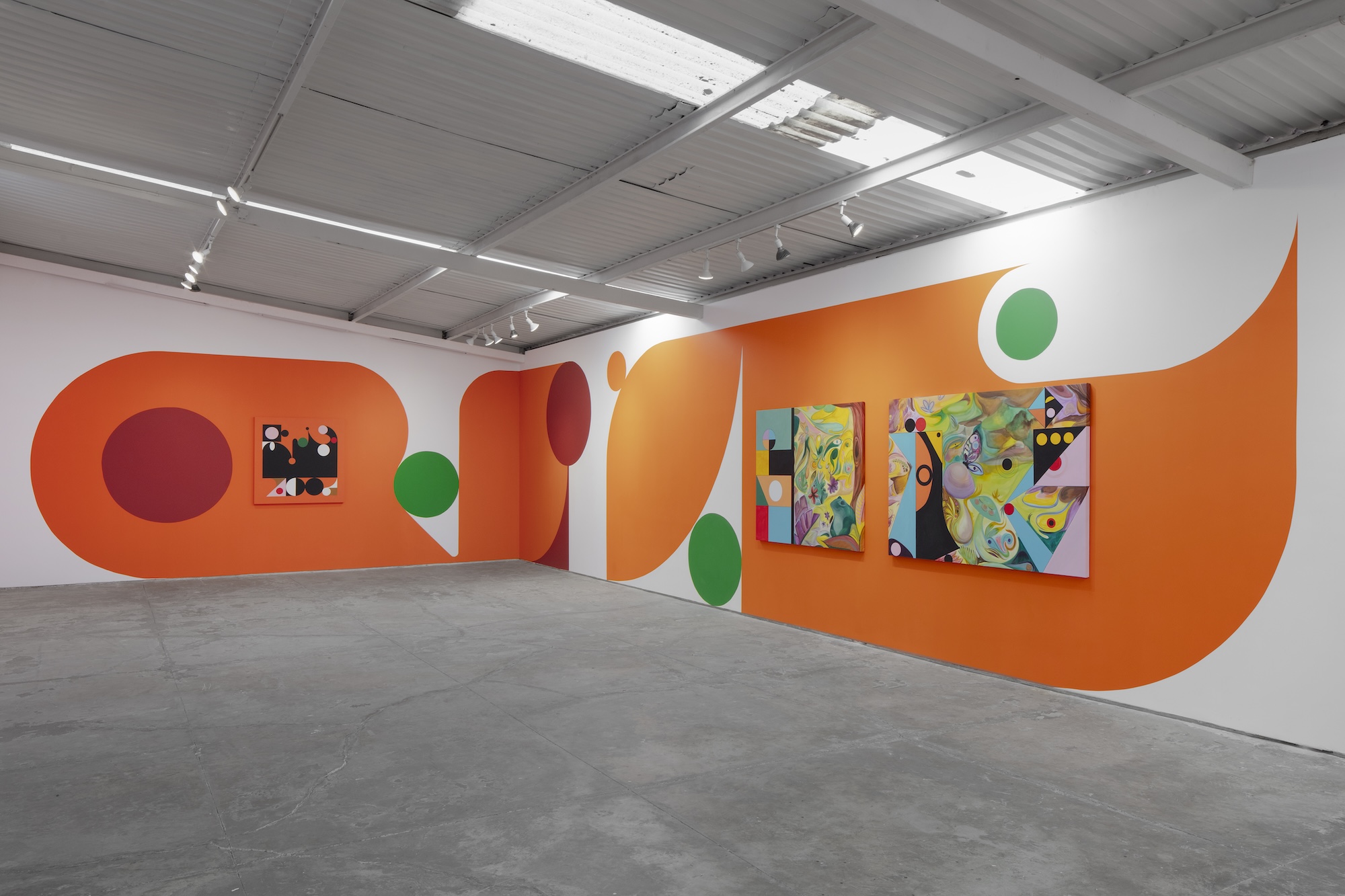
Install view. Jardín. Bodega OMR. CDMX, MX. 2025
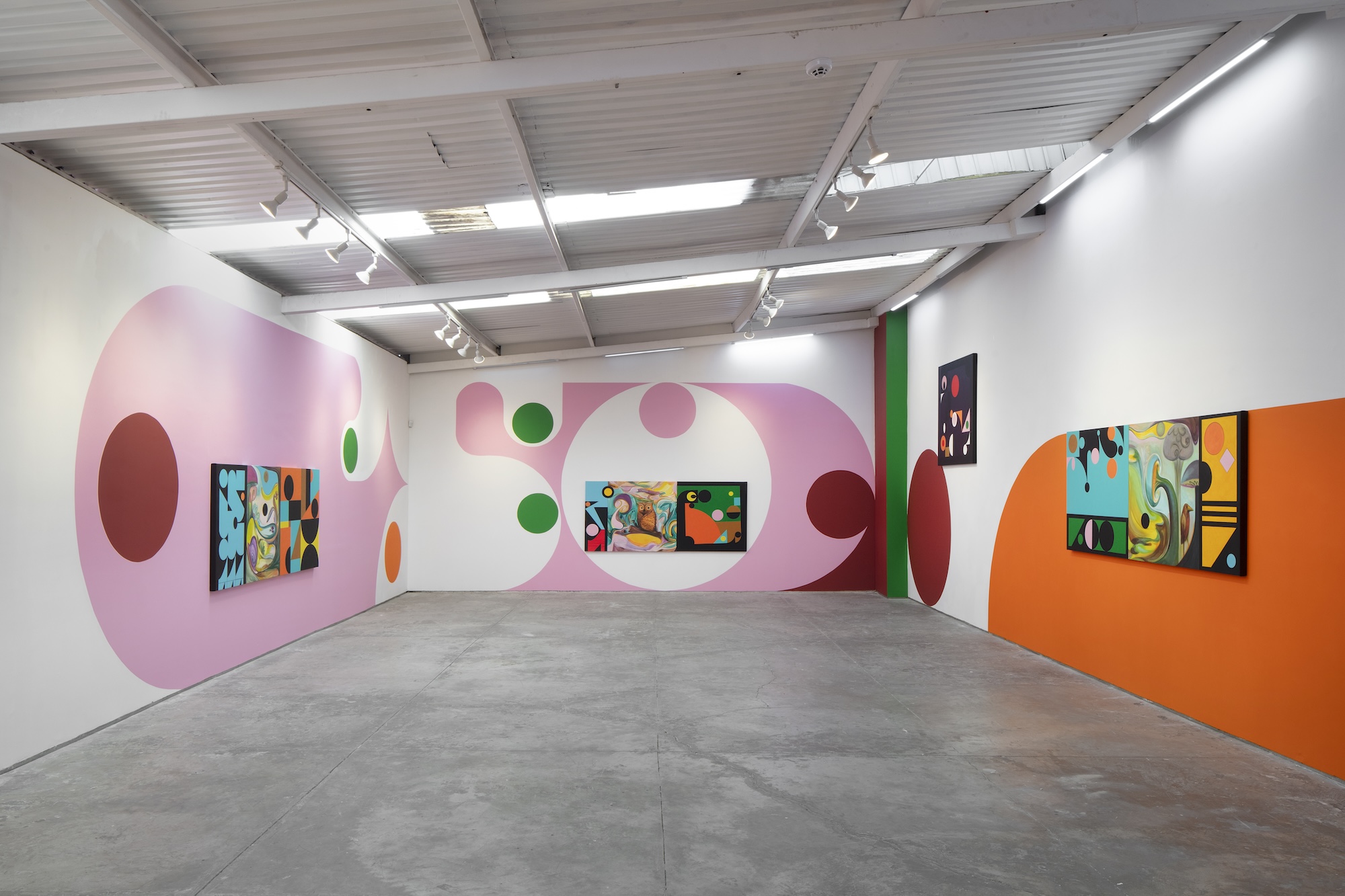
Install view. Jardín. Bodega OMR. CDMX, MX. 2025
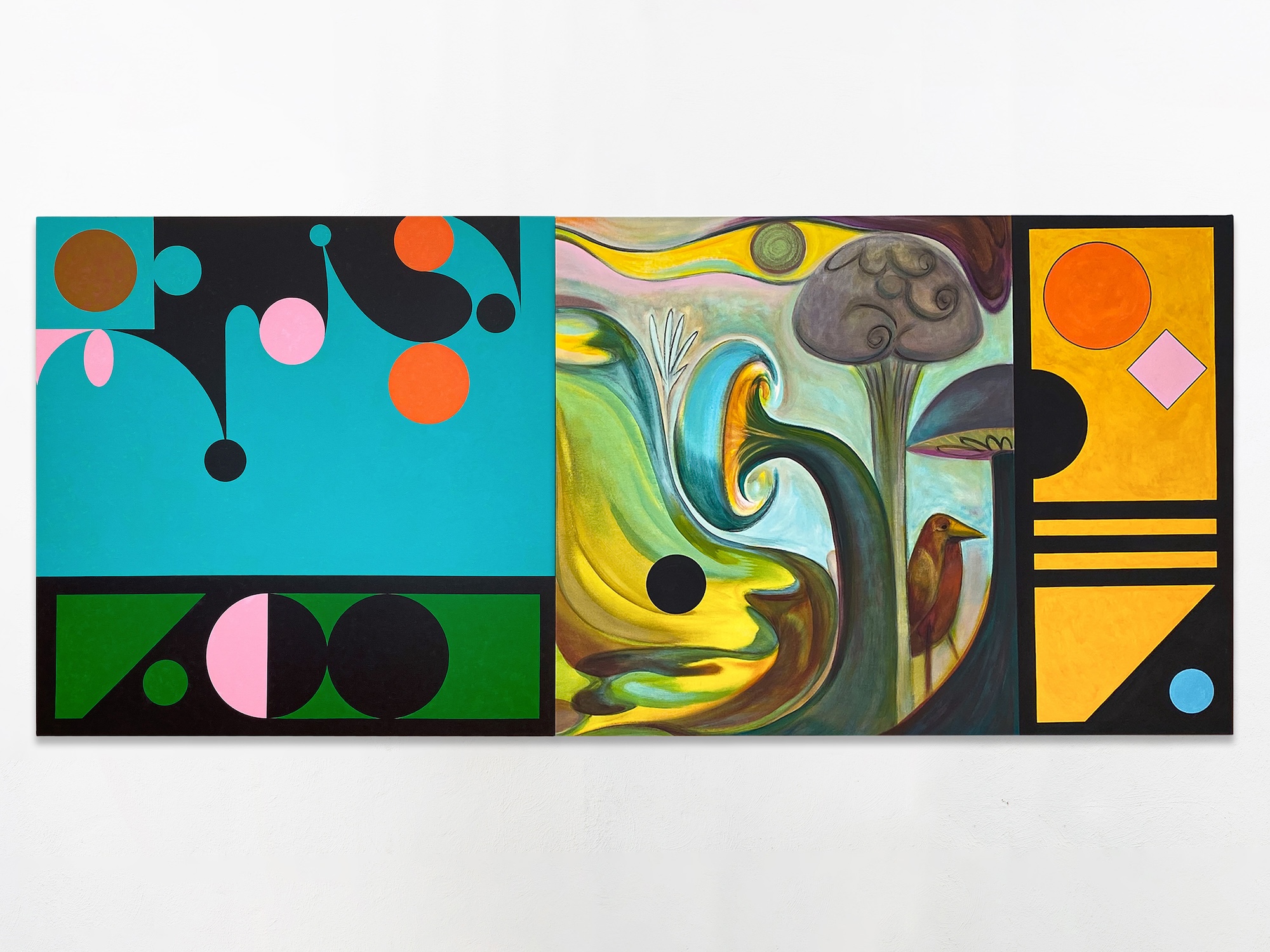
Pájaro, 2025
Acrylic on canvas.
Left: 39 ⅜ x 39 ⅜ x 1 ⅝ in (100 x 100 x 4.2 cm)
Right: 39 ⅜ x 51 ⅛ x 1 ⅝ in (100 x 130 x 4.2 cm)
Total: 39 ⅜ x 90 ½ x 1 ⅝ in (100 x 230 x 4.2 cm)
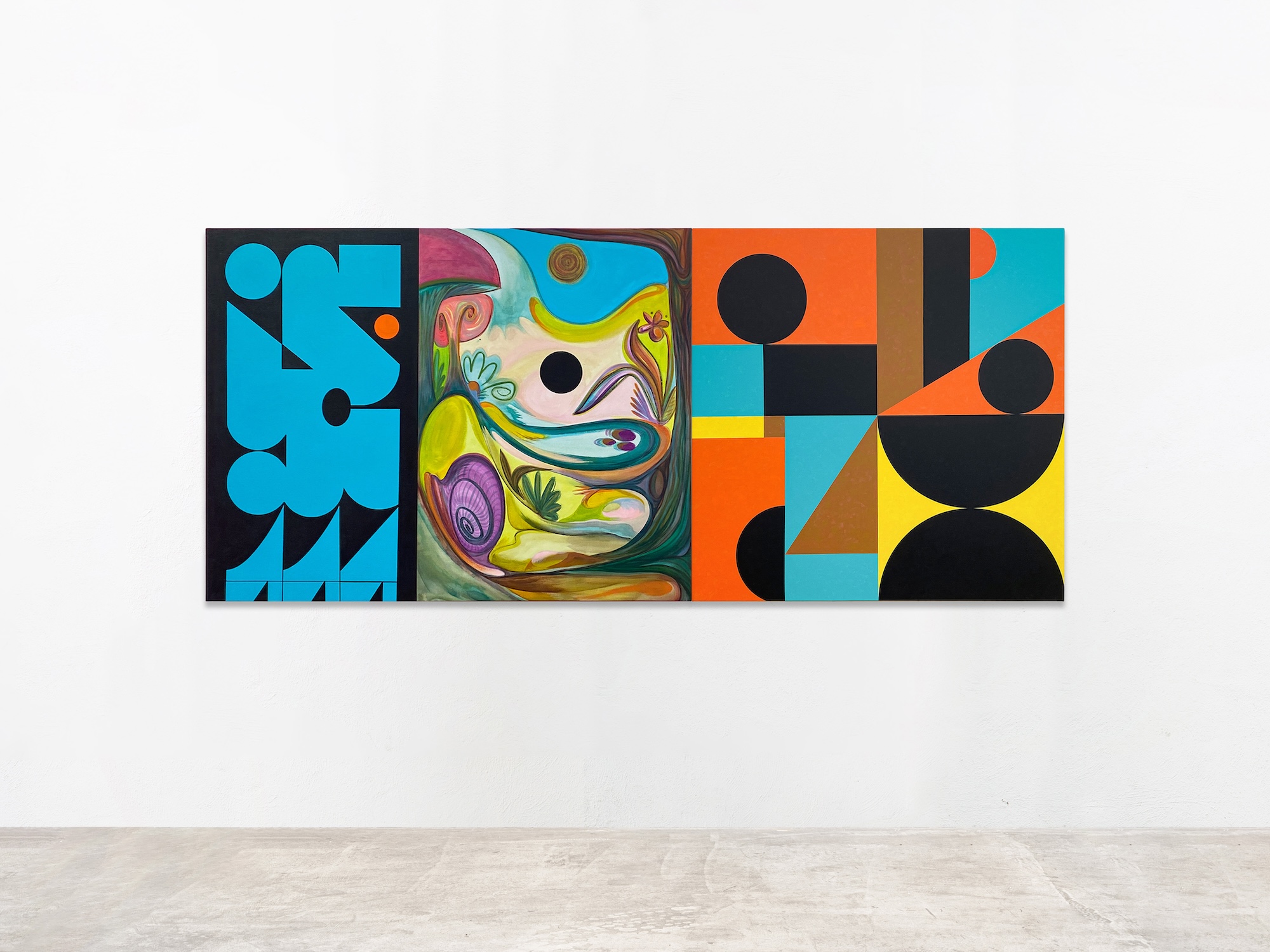
Caracol, 2025
Acrylic on canvas.
Left: 39 ⅜ x 51 ⅛ x 1 ⅝ in (100 x 130 x 4.2 cm)
Right: 39 ⅜ x 39 ⅜ x 1 ⅝ in (100 x 100 x 4.2 cm)
Total: 39 ⅜ x 90 ½ x 1 ⅝ in (100 x 230 x 4.2 cm)
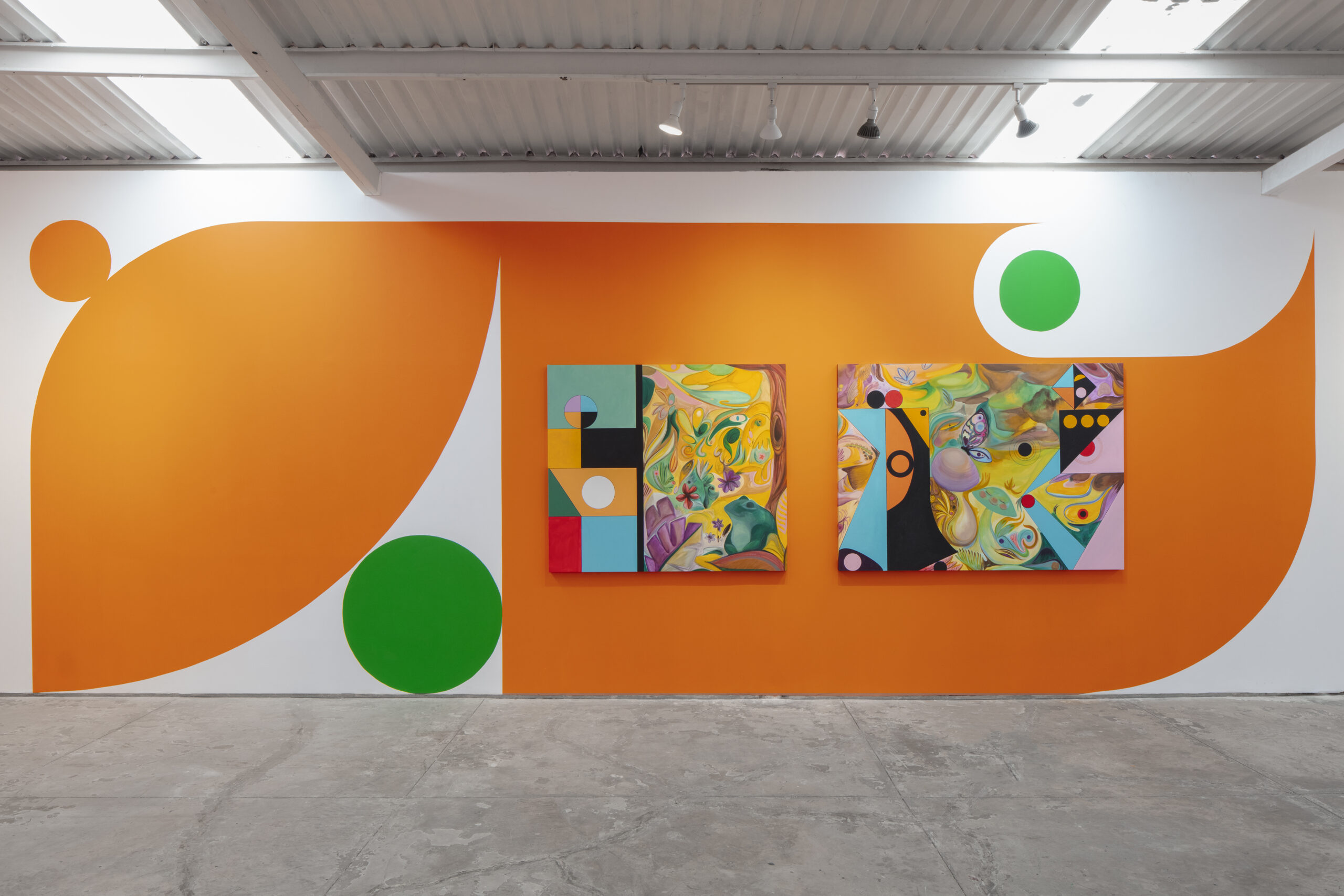
Install view. Jardín. Bodega OMR. CDMX, MX. 2025
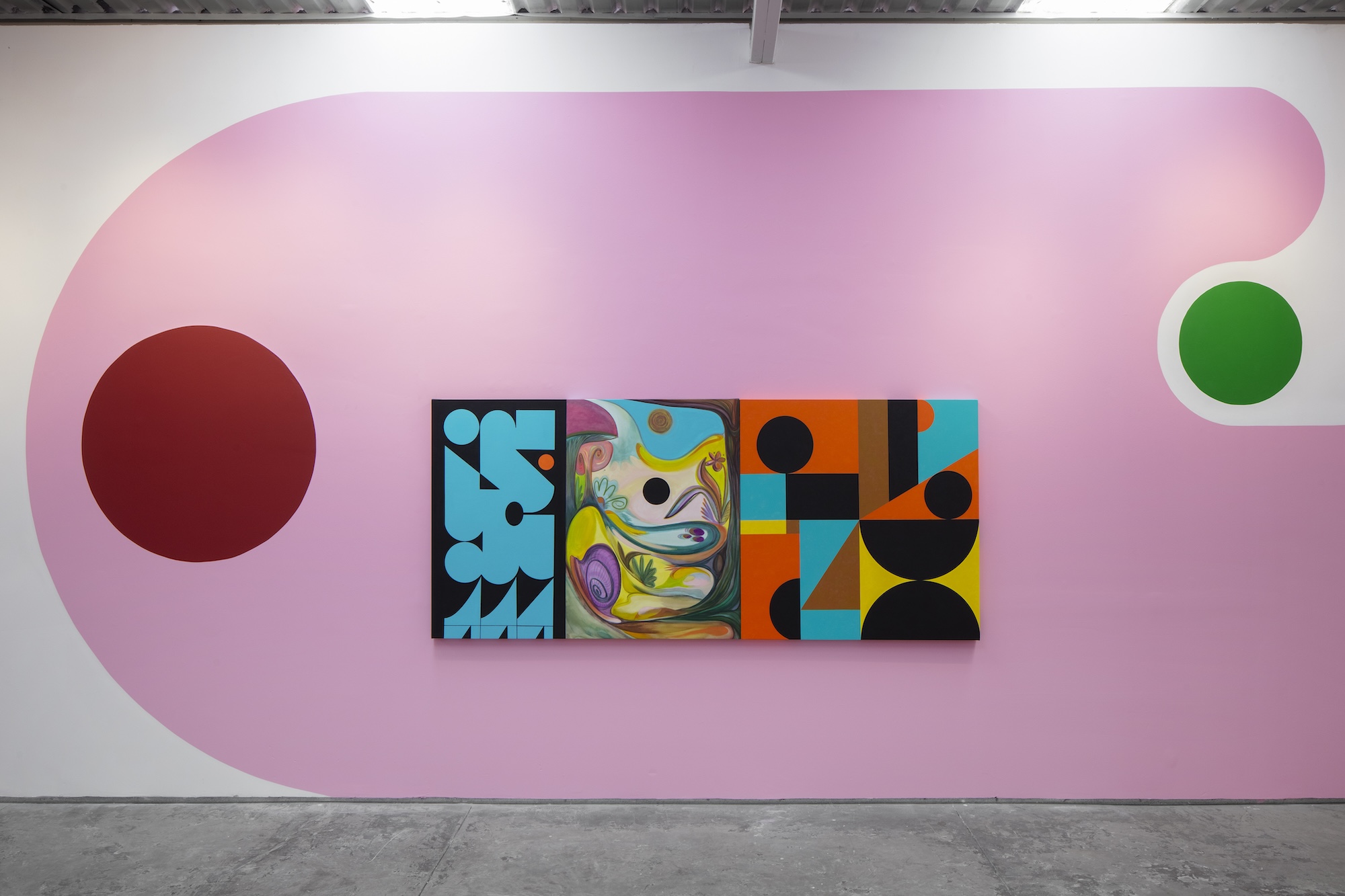
Install view. Jardín. Bodega OMR. CDMX, MX. 2025
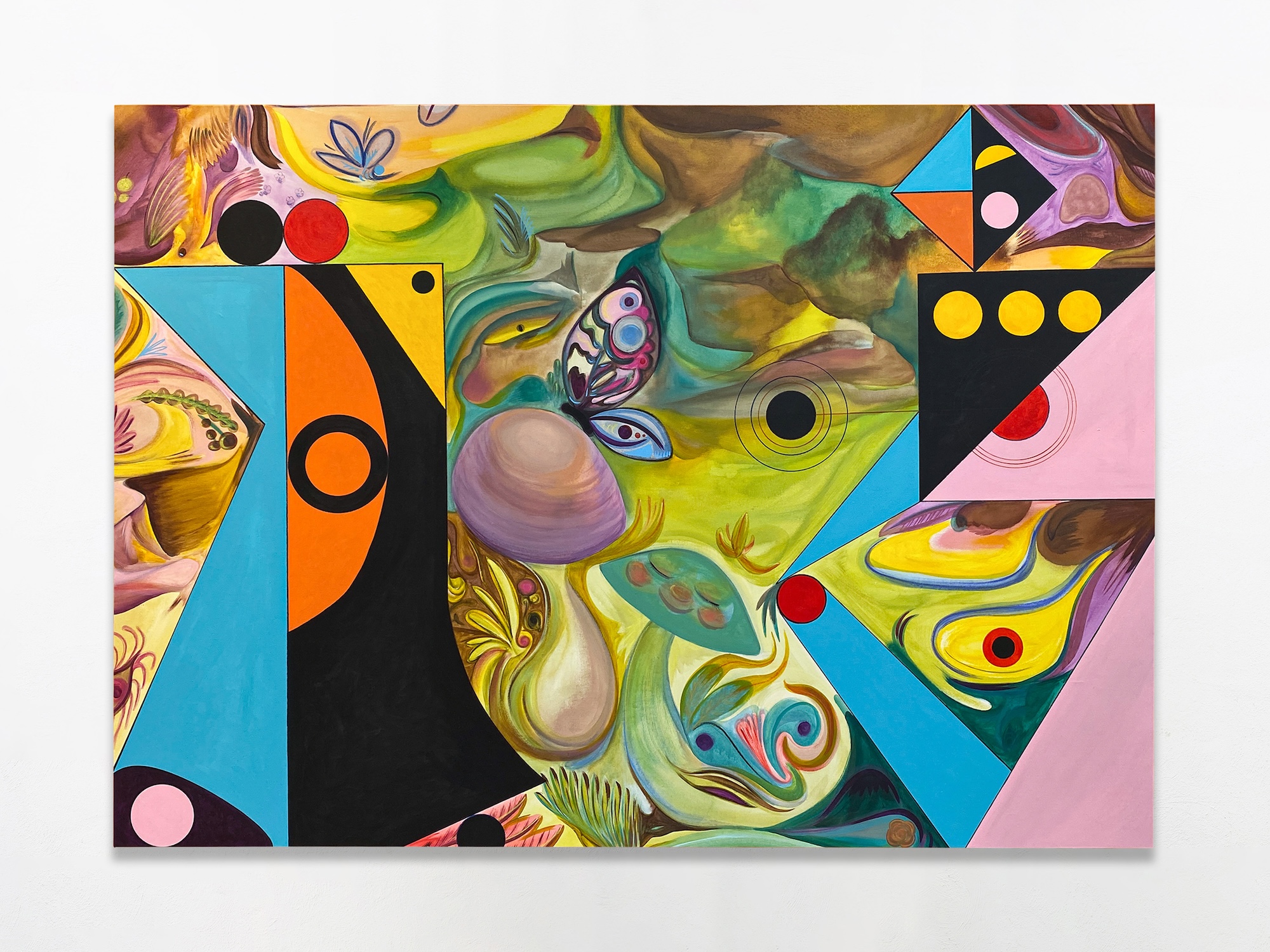
Mariposa, 2025.
Acrylic on canvas.
51 ⅛ x 70 ⅞ x 1 ⅝ in (130 x 180 x 4.2 cm)
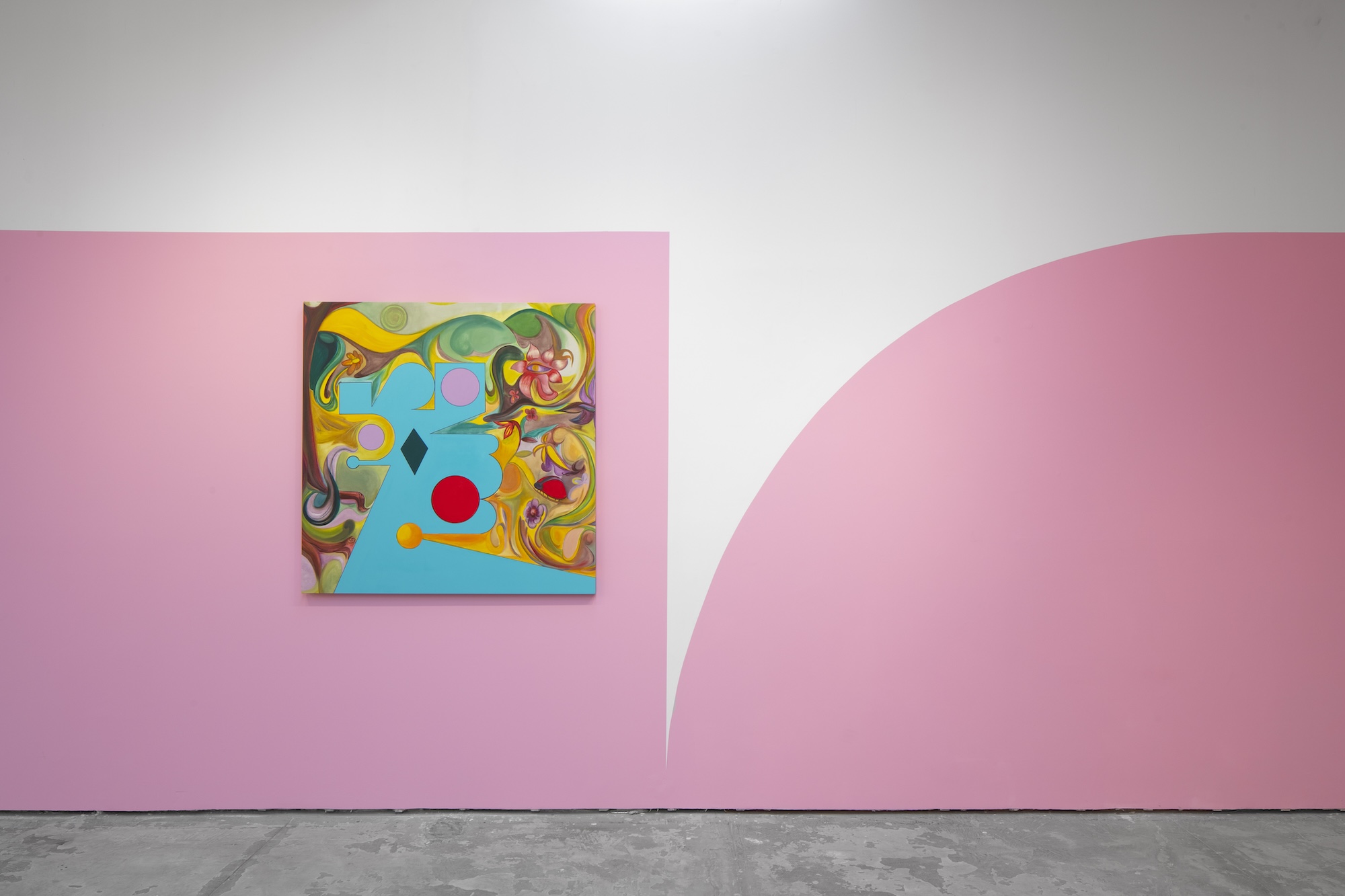
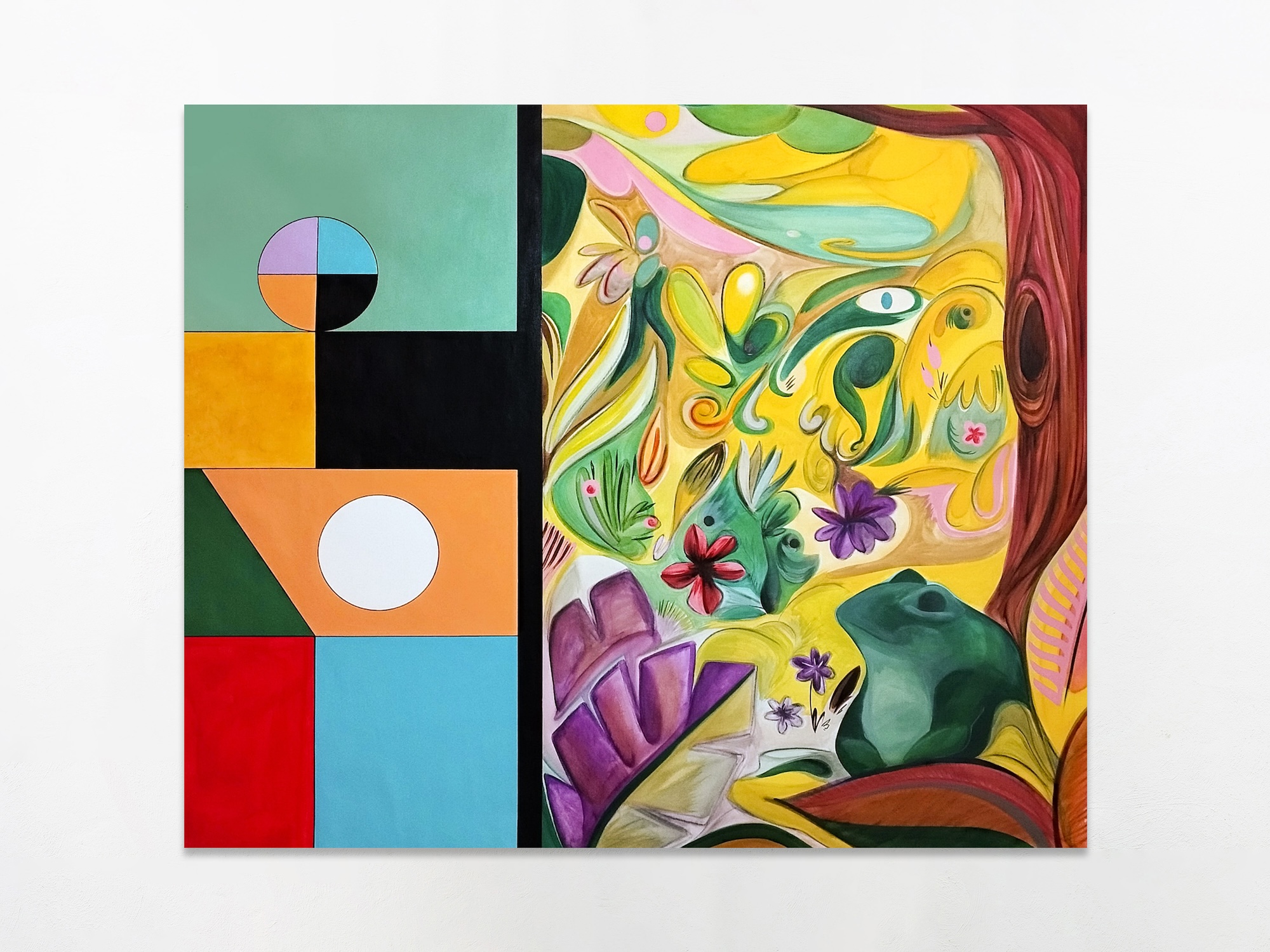
Sapo, 2025.
Acrylic on canvas
51 ⅛ x 59 x 1 ⅝ in (130 x 150 x 4.2 cm)
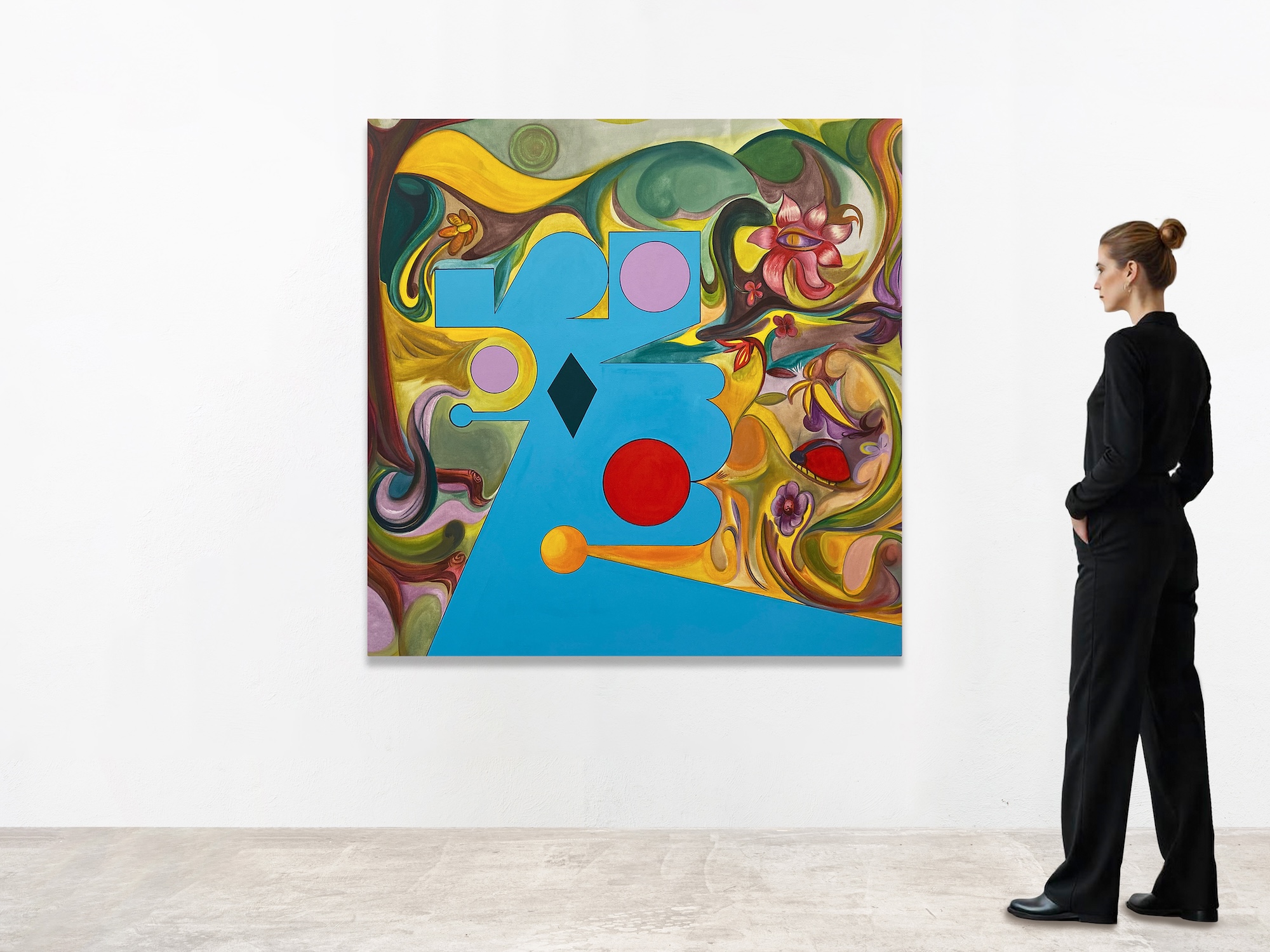
Vaquita, 2025.
Acrylic on canvas.
51 ⅛ x 51 ⅛ x 1 ⅝ in (130 x 130 x 4.2 cm)
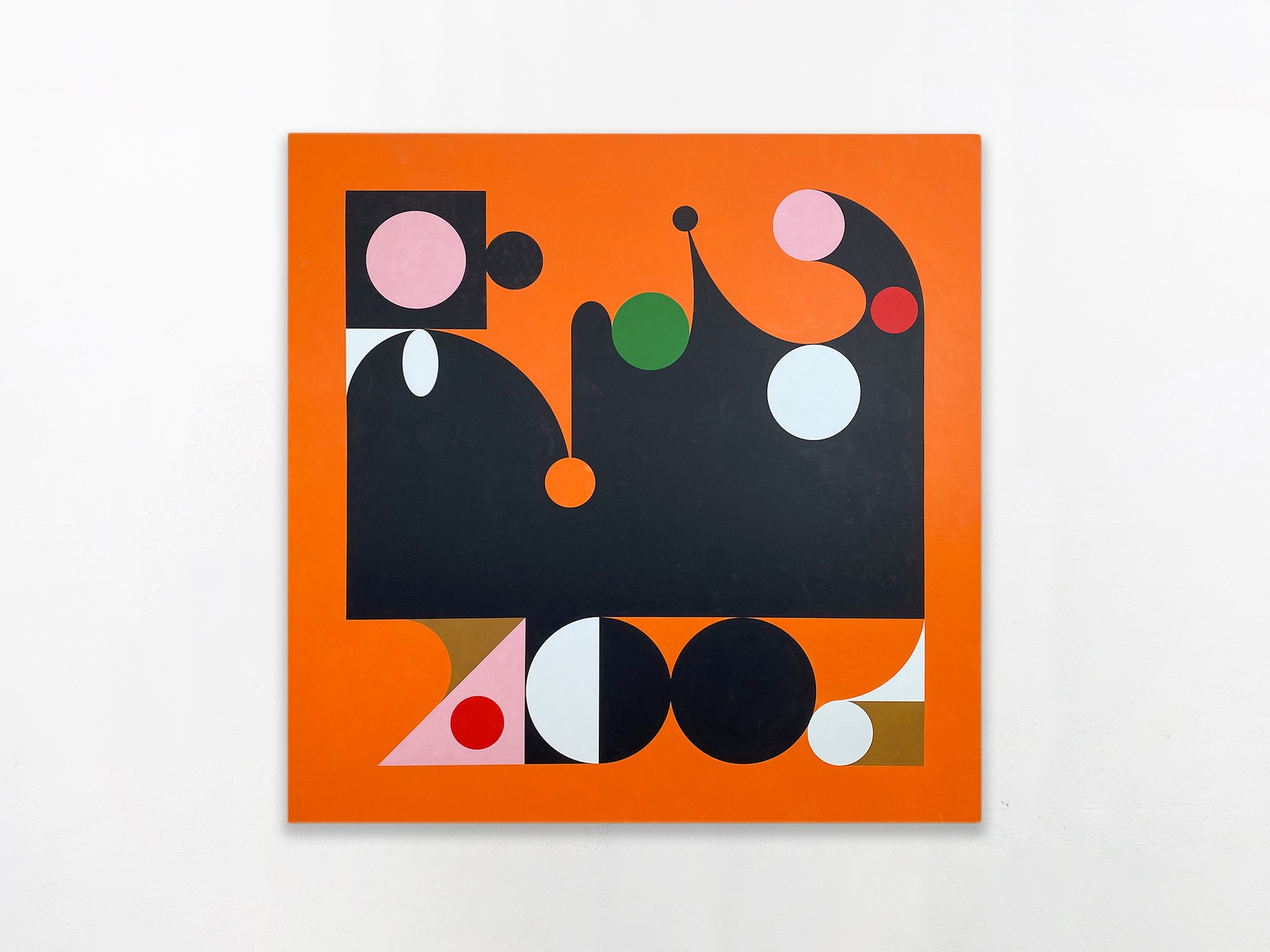
Tren, 2022.
Acrylic on canvas.
47 ¼ x 47 ¼ x 1 ¾ in (120 x 120 x 4.3 cm)
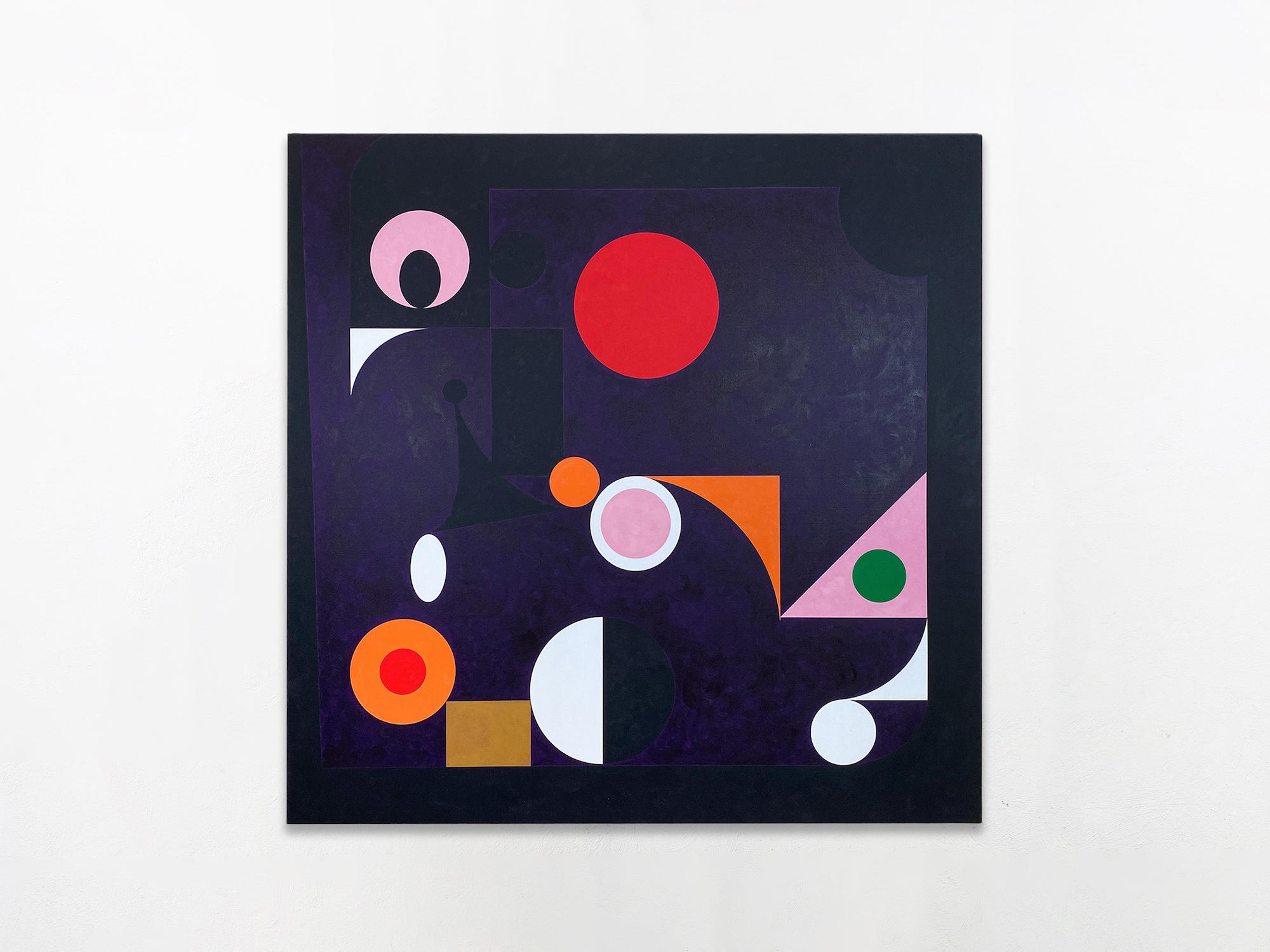
Serpiente, 2022.
Acrylic on canvas.
47 ¼ x 47 ¼ x 1 ¾ in (120 x 120 x 4.3 cm)